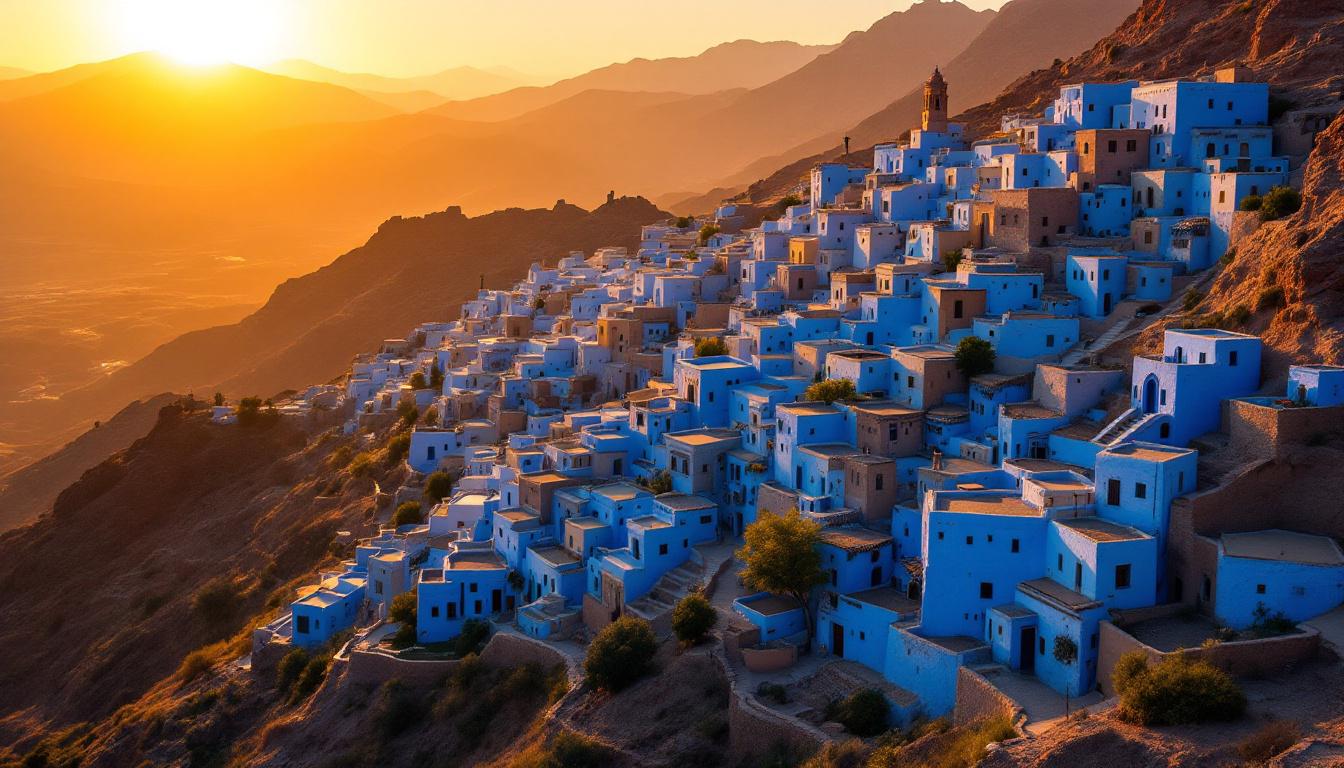Morocco’s electric-blue mountain village of Chefchaouen seems almost otherworldly, like a sapphire hidden in the rugged Rif Mountains. While over 50,000 Instagram posts feature its azure alleys, most visitors never discover the cultural depth behind the photogenic façade. This centuries-old settlement in the Tangier-Tetouan-Al Hoceima region has quietly become Morocco’s most visually distinctive destination, where every building wears shades of blue ranging from pale sky to deep cobalt.
The mystical origins of Chefchaouen’s blue streets
While many guides attribute the blue-washing tradition to Jewish refugees who arrived in the 1930s, local historian Mohammed Aarab offers a different perspective. “The blue began as a practical mosquito repellent, but evolved into something more spiritual,” he explains. “Each family maintains their own section of wall, creating subtle variations that tell a story of community pride stretching back generations.”
This tradition has recently faced challenges, with Chefchaouen limiting tourism for the first time in 800 years to preserve its unique character and prevent overtourism from disrupting local life.
Where centuries-old craftsmanship thrives in hidden workshops
Beyond the frequently photographed “Instagram steps,” Chefchaouen harbors artisan traditions largely unseen by casual visitors. In narrow workshops tucked along Rue Targui, craftsmen create woolen blankets and distinctive leather goods using techniques dating back to Andalusian influences in the 15th century.
“We use natural dyes from local plants – indigo, pomegranate, and saffron – just as my grandfather taught me,” shares Youssef, a third-generation weaver whose hands bear the blue stains of his craft.
The mountain oasis most travelers miss
While most visitors confine themselves to the medina’s blue alleyways, the surrounding Rif Mountains offer spectacular hiking opportunities. The Akchour Waterfalls, just 45 minutes from town, feature emerald pools beneath dramatic cascades where locals picnic on weekends.
Unlike Bolivia’s white mountain city of Sucre, Chefchaouen’s appeal lies not in grand architecture but in its harmonious relationship with the natural landscape.
A culinary scene shaped by mountain traditions
Chefchaouen’s isolation has preserved distinctive regional dishes rarely found elsewhere in Morocco. At family-run Cafe Clock, chef Fatima serves bissara (fava bean soup) alongside mountain honey and goat cheese produced in nearby villages.
The local specialty tagine uses wild thyme and olive oil pressed from groves visible from the town’s ancient walls, creating flavors unique to this microregion.
The surprising serenity of Morocco’s most photographed town
Despite its Instagram fame, Chefchaouen maintains tranquility that eludes other picturesque medieval villages in Europe. Early mornings reveal locals refreshing wall paint, shopkeepers arranging textiles, and the call to prayer echoing through empty streets before day-trippers arrive from Fez and Tangier.
“We live in a painting that changes with the light,” observes Hassan, who runs a small guesthouse. “At dawn and dusk, when tourists disappear, Chefchaouen returns to us.”
Sustainable travel initiatives protecting the blue gem
Unlike pioneering sustainable destinations in the Maldives, Chefchaouen has only recently begun addressing tourism impacts. New community-led programs now train local guides, restrict visitor numbers in fragile areas, and ensure tourism revenues benefit residents who maintain the iconic blue walls.
The town has established designated photography zones where visitors can capture perfect shots without disrupting daily life in residential areas, a model being studied by medieval European towns facing similar challenges.
Chefchaouen offers more than just a blue backdrop for social media. It presents a living canvas where centuries of mountain culture, Andalusian heritage, and Moroccan traditions blend into something entirely unique. In a world of increasingly manufactured travel experiences, this genuine blue mountain village reminds us that the most memorable destinations are those that maintain their soul.
